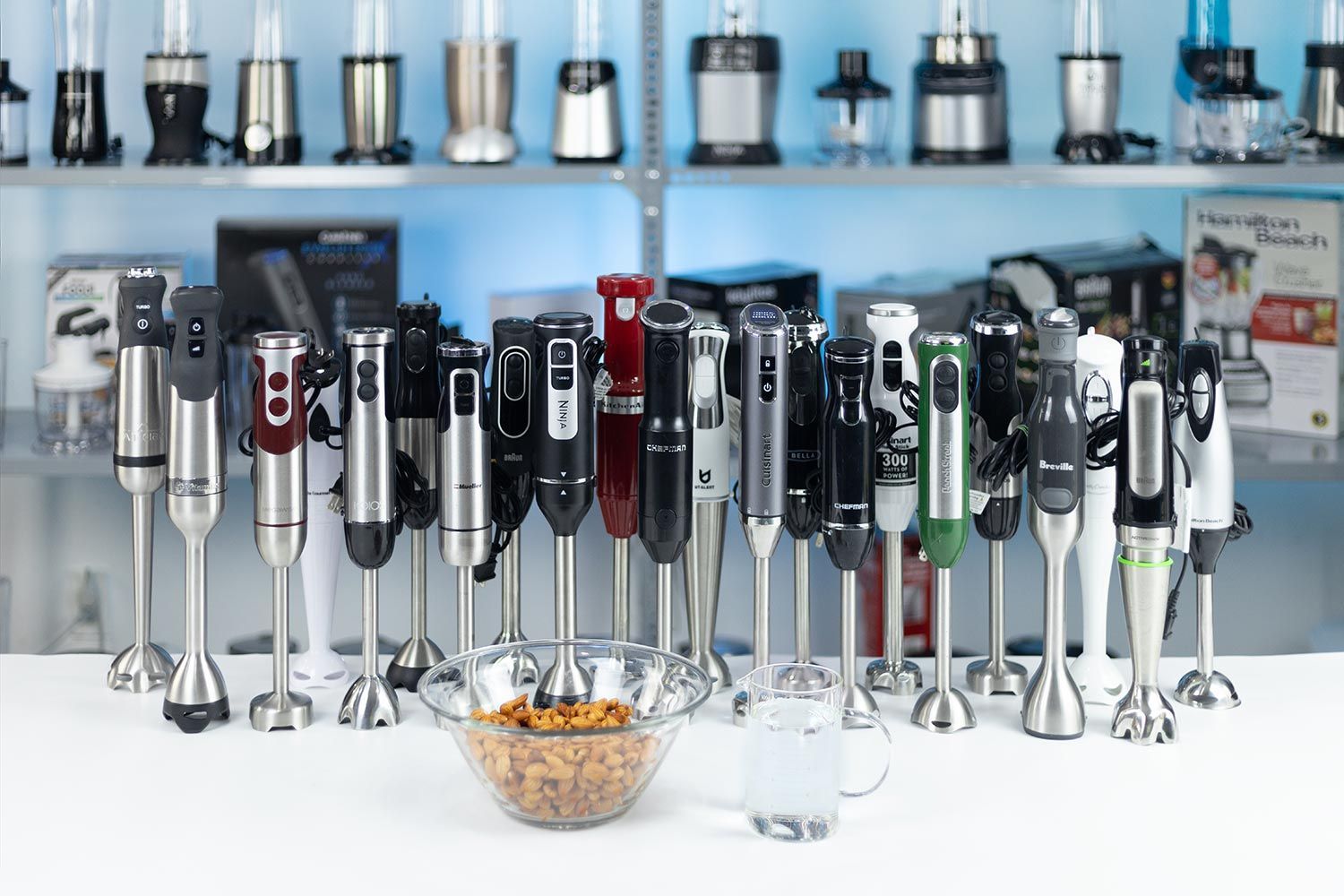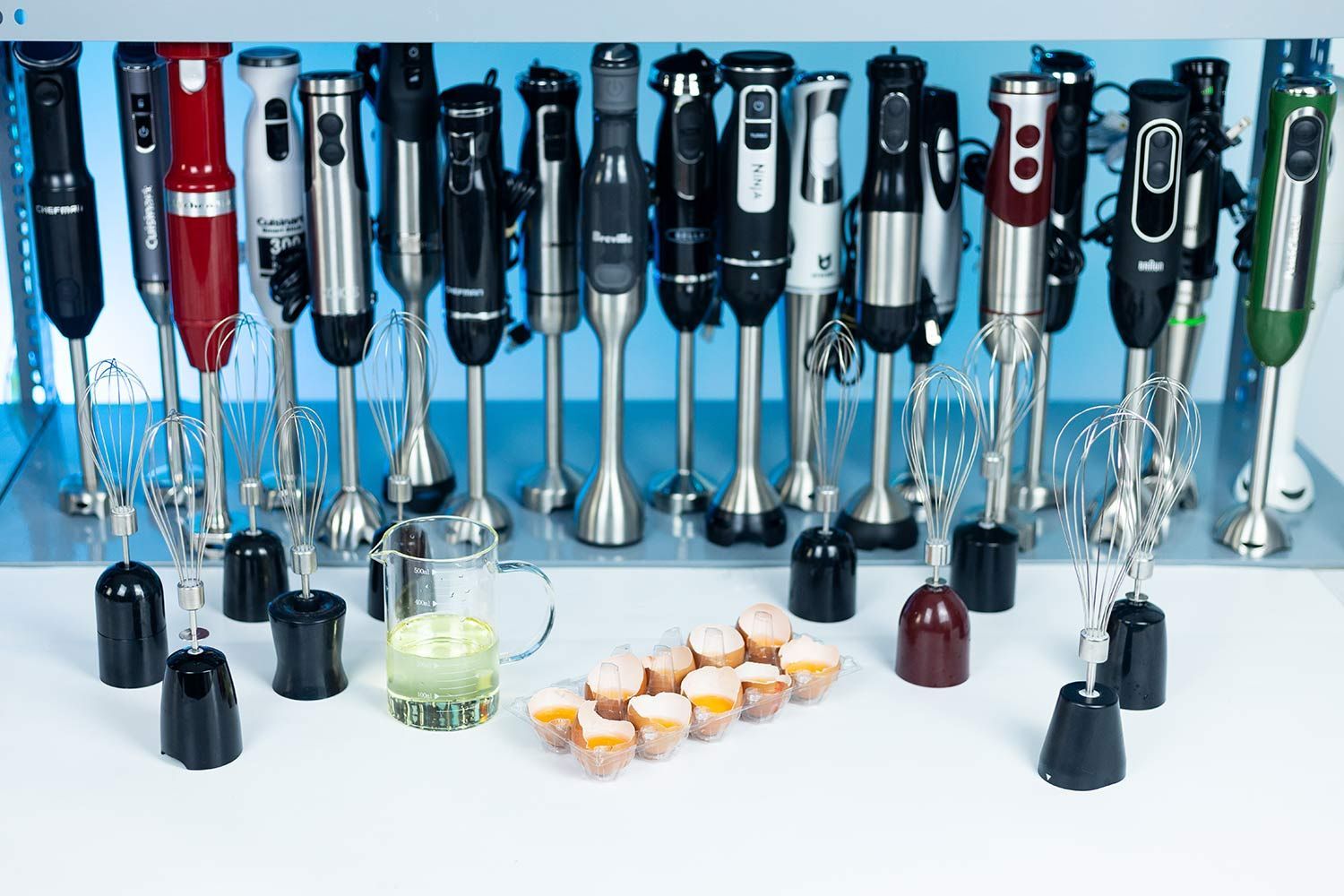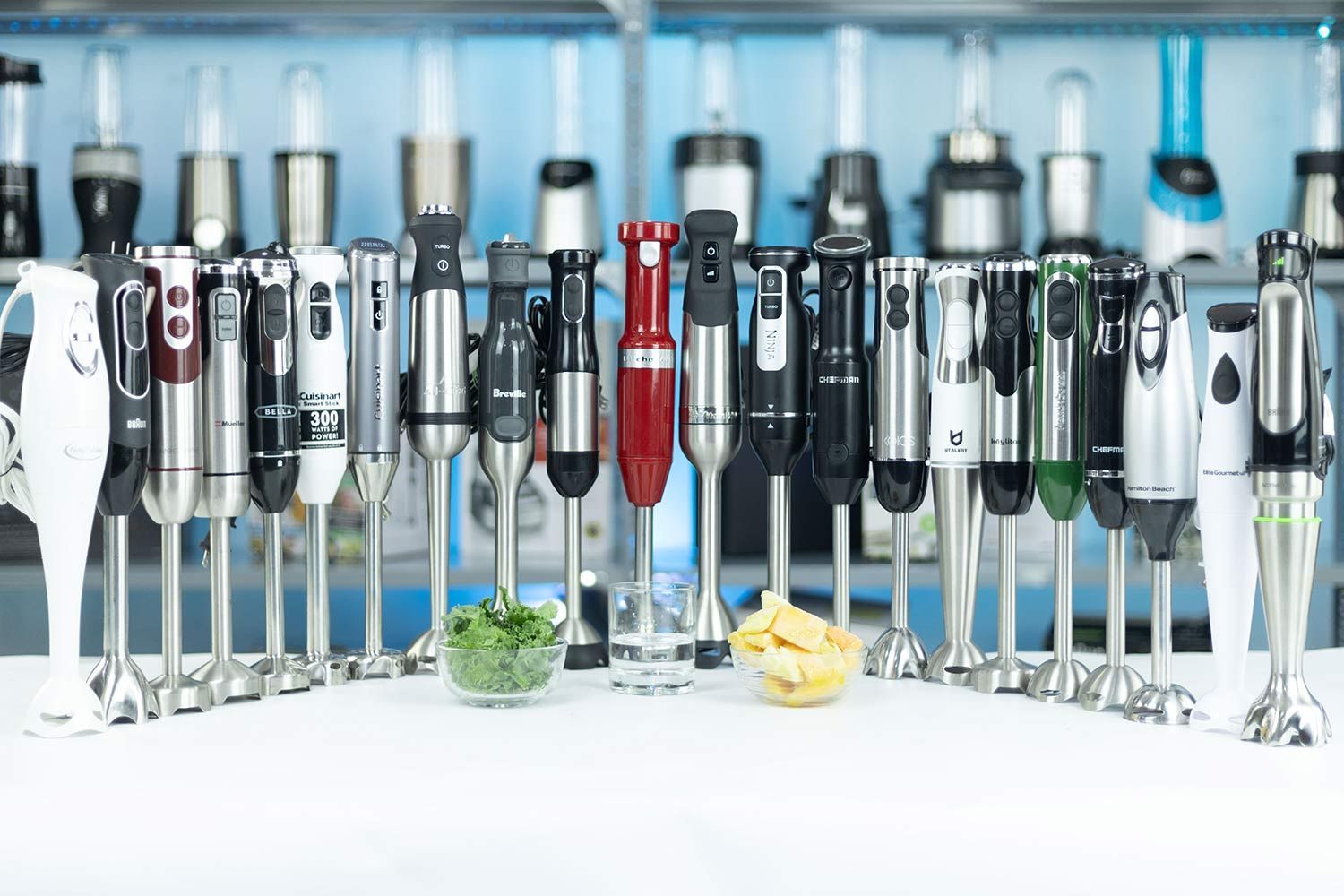Our recommendations are made independently. We may receive commissions from purchases made via our links.
Whipped Egg-Whites Test for Immersion Blenders
Can immersion blenders be an alternative to hand mixers? Our whipping egg-white test will help answer this question.
This test is part of How Shouldit Tests Immersion Blenders v1.0
Whipping might initially appear to be a secondary function for an immersion blender, often taking a backseat to common uses such as blending or pureeing. However, for those passionate about baking or preparing egg-based dishes, the capability to efficiently whip egg whites is indispensable. Recognizing this essential need, our test was specifically tailored to measure the whipping efficiency of various immersion blenders.
We thoroughly assessed how well these blenders could whip egg whites into stiff, airy peaks, focusing not only on the speed but also the consistency and stability of the aeration. With our findings, you'll be equipped to choose an all-around immersion blender that not only broadens your cooking capabilities but also ensures excellence in both sweet and savory creations that require whipped ingredients.
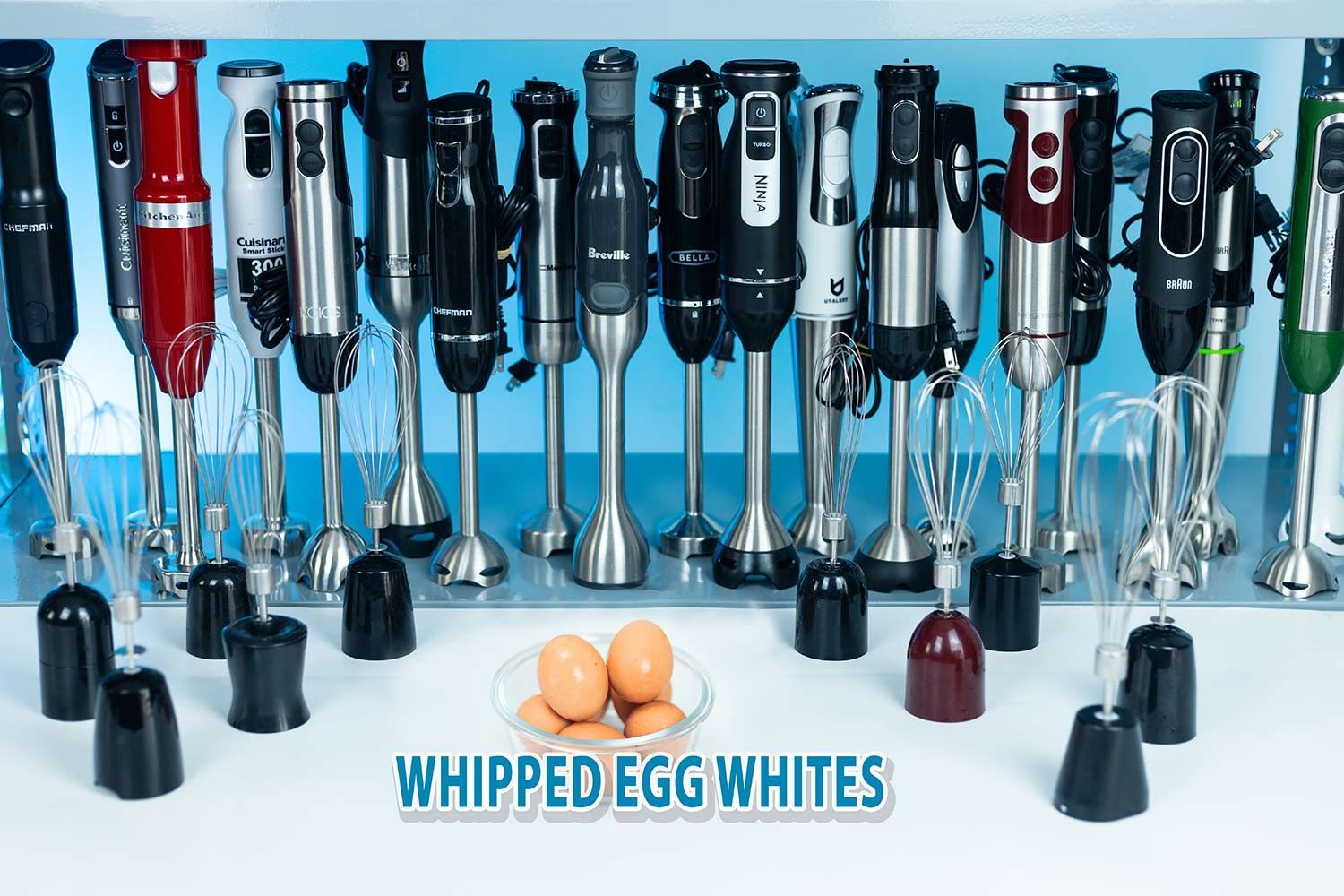
Why The Test Matters
The whipping egg white test is pivotal for evaluating a blender's suitability for delicate culinary tasks, particularly in recipes like meringues, soufflés, and angel food cakes. The significance of this test lies in its ability to determine whether a blender can achieve the delicate balance necessary for perfect whipped egg whites. This involves gently and consistently introducing air into the whites to attain the ideal texture—neither too firm nor too fluffy.
Achieving this balance is crucial, as it not only affects the volume and structure of desserts but also indicates the blender's precision and gentleness in handling other sensitive tasks, such as folding in flour or blending herbs without damaging their integrity.
For blenders equipped with a whisk attachment, this test is even more critical. It goes beyond merely having an extra feature; it evaluates the effectiveness of this feature in real-world applications. The ability of a blender to whip egg whites to the correct consistency can be a decisive factor for consumers, helping them distinguish between a genuinely versatile appliance and one that merely comes with unnecessary add-ons.
Testing Recipe: 1 Serving
- 100 ml egg white
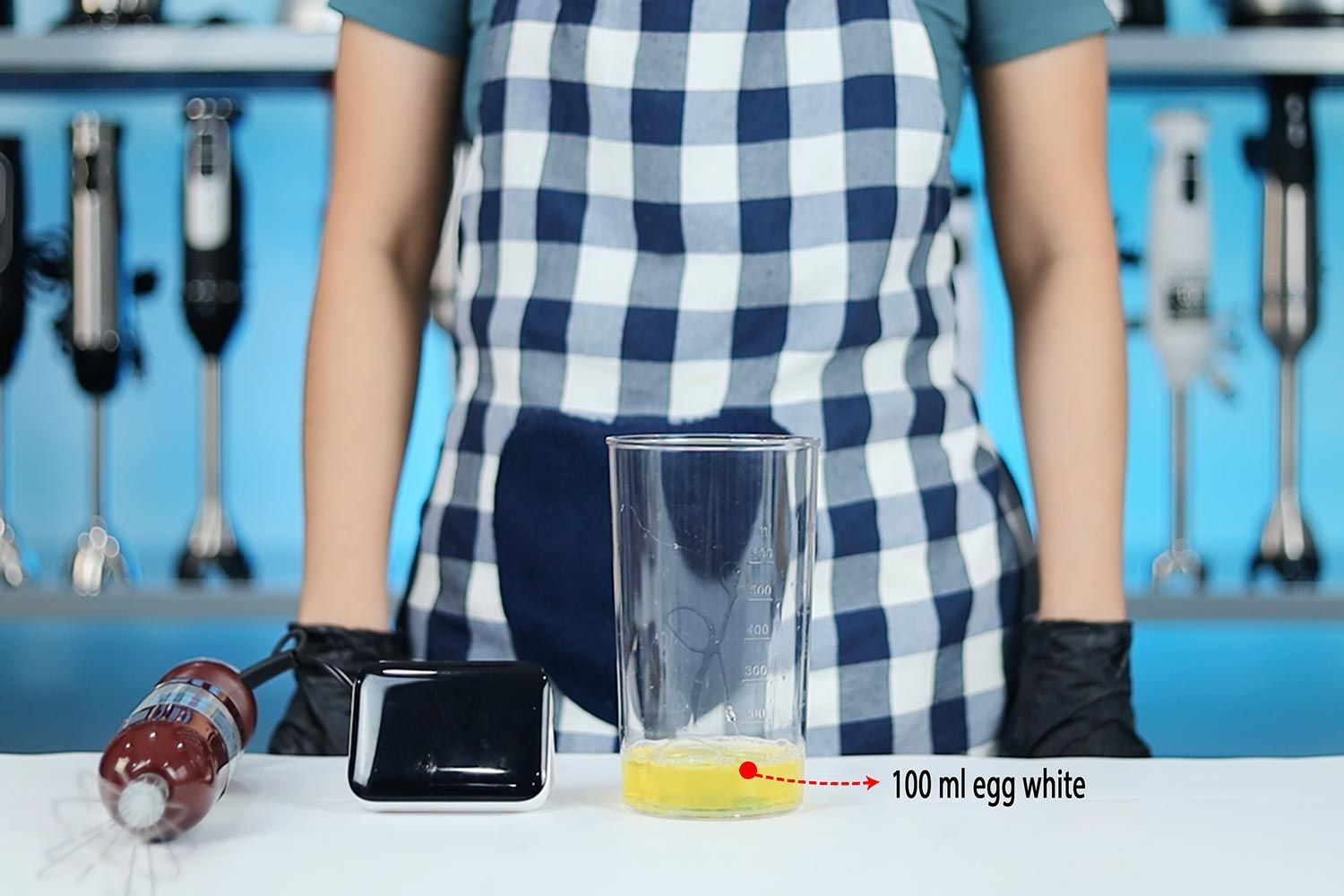
Testing Procedure
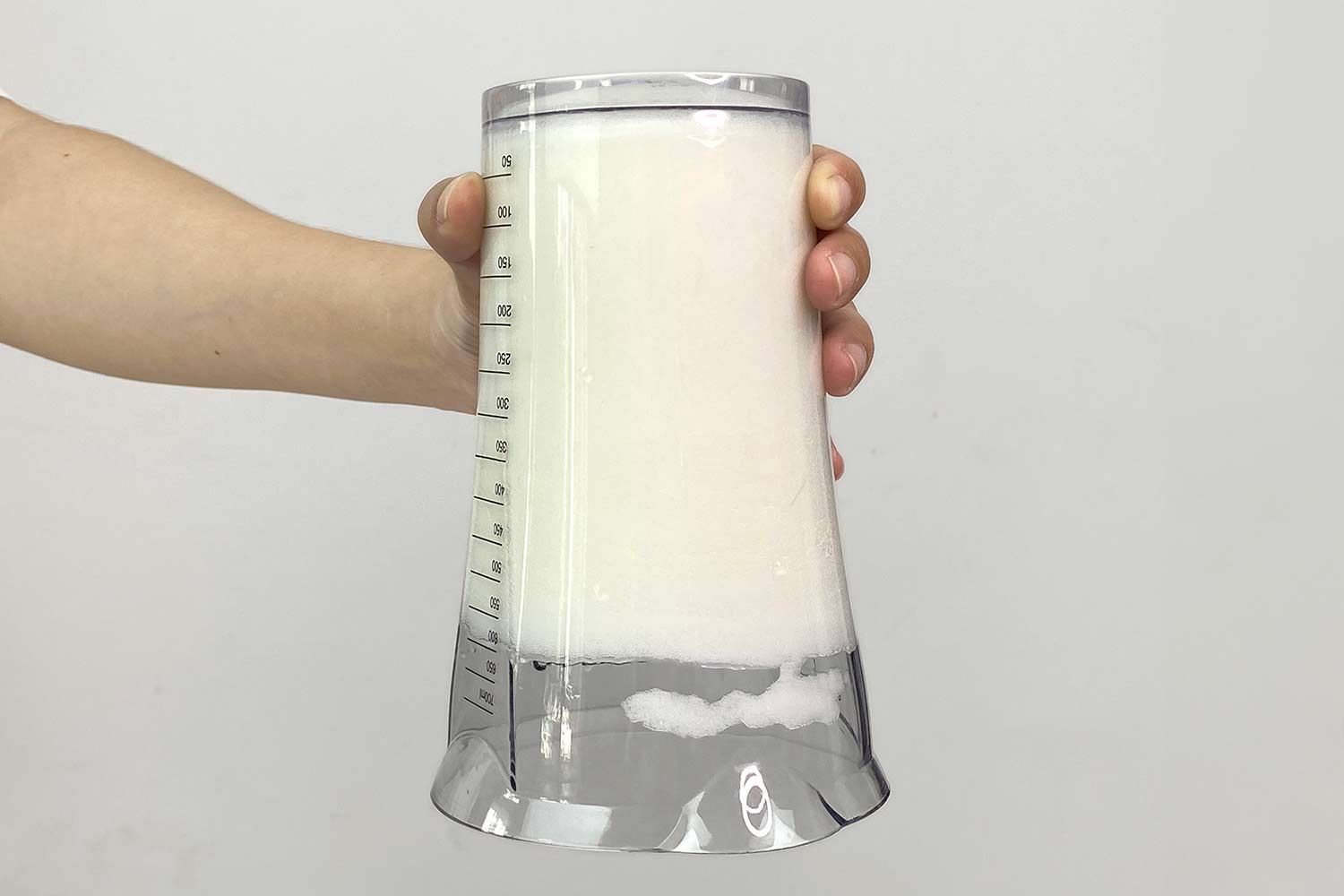
The test begins by pouring egg whites into a 24-oz beaker. Considering the diversity in blender models, some are equipped with a whisk attachment, while others come with just the standard blending wand. Accordingly, we use the appropriate tool for each model—either an immersion whisk or a blending shaft.
To start, we set the blender to its lowest speed, a strategy aimed at preventing splattering and ensuring a smooth commencement of the blending process.

As the egg whites start to froth and increase in volume, we gradually increase the blender's speed. This methodical increase in speed is critical; it helps to create stable air bubbles in the egg whites, preventing them from becoming over-beaten and grainy, and ensuring they reach the desired stiff peak consistency.
It is important to note that while blenders typically have a recommended working time, usually about one minute, our test procedure requires a continuous operation until stiff peaks are formed. This is to ensure a comprehensive assessment of the blender's capabilities.
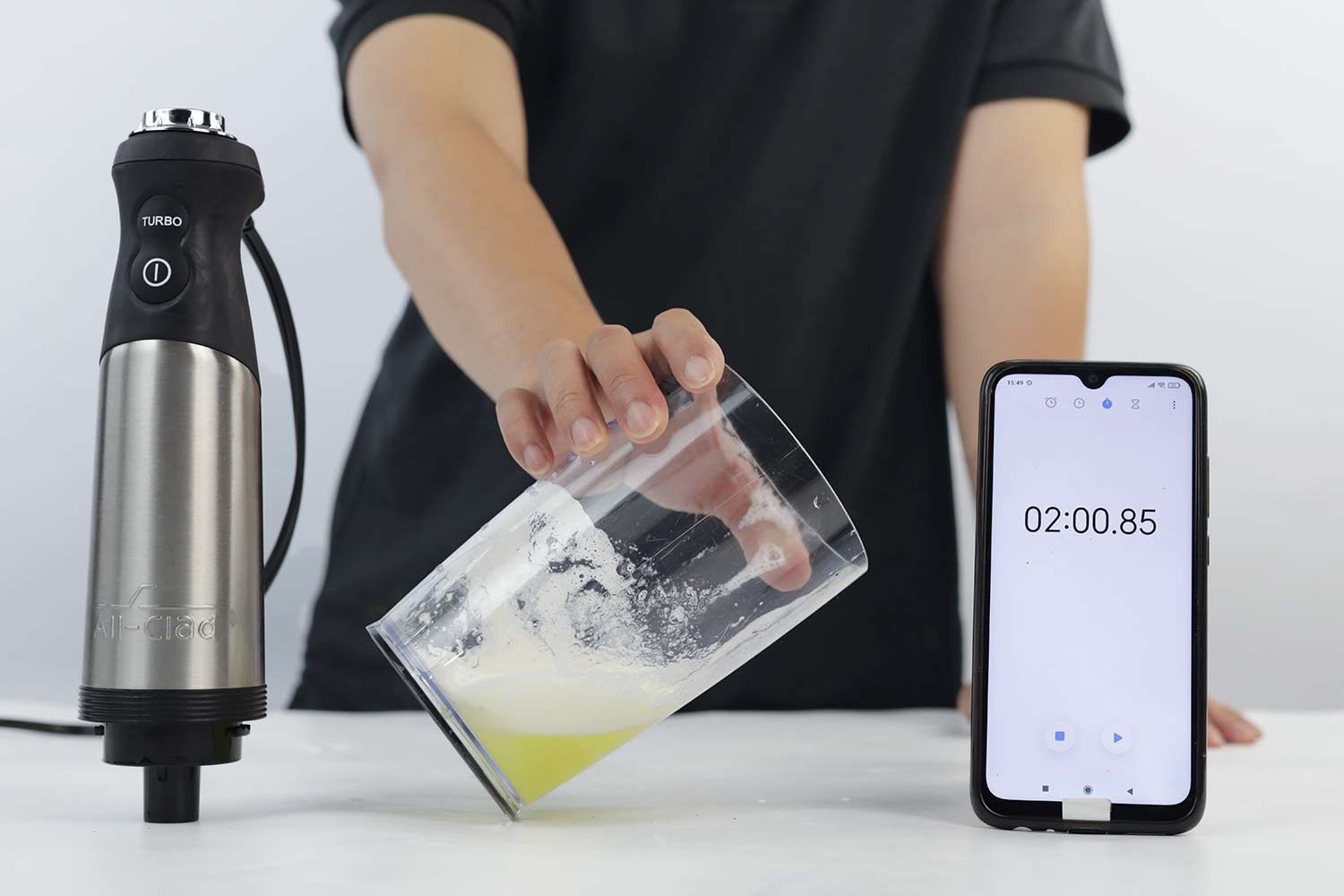
Stopping the blender prematurely, in adherence to the recommended working time, might not allow the egg whites to achieve the necessary structure, leading to inconclusive or inaccurate results.
Scoring Scale
Our scoring scale for each blender, out of 10, is primarily based on the time taken to achieve stiff peaks in whipped egg whites. We chose stiff peaks as our benchmark due to their significant role in culinary practices. This stage, where the egg whites are so effectively aerated that they form firm, upright peaks, is crucial for many recipes. Achieving stiff peaks requires a blender to balance power and precision, making it a comprehensive test of the applicant's capabilities.
Chef Tuyet Pham's culinary expertise played a vital role in shaping and refining our scoring system. Her involvement ensured that the scoring was consistent across different blenders and in line with professional culinary standards. Her experience allowed for an accurate assessment of the time required to achieve stiff peaks, taking into account not just speed but also the quality of the whipped egg whites.
Here’s how our scoring breakdown was designed:
Scoring Breakdown
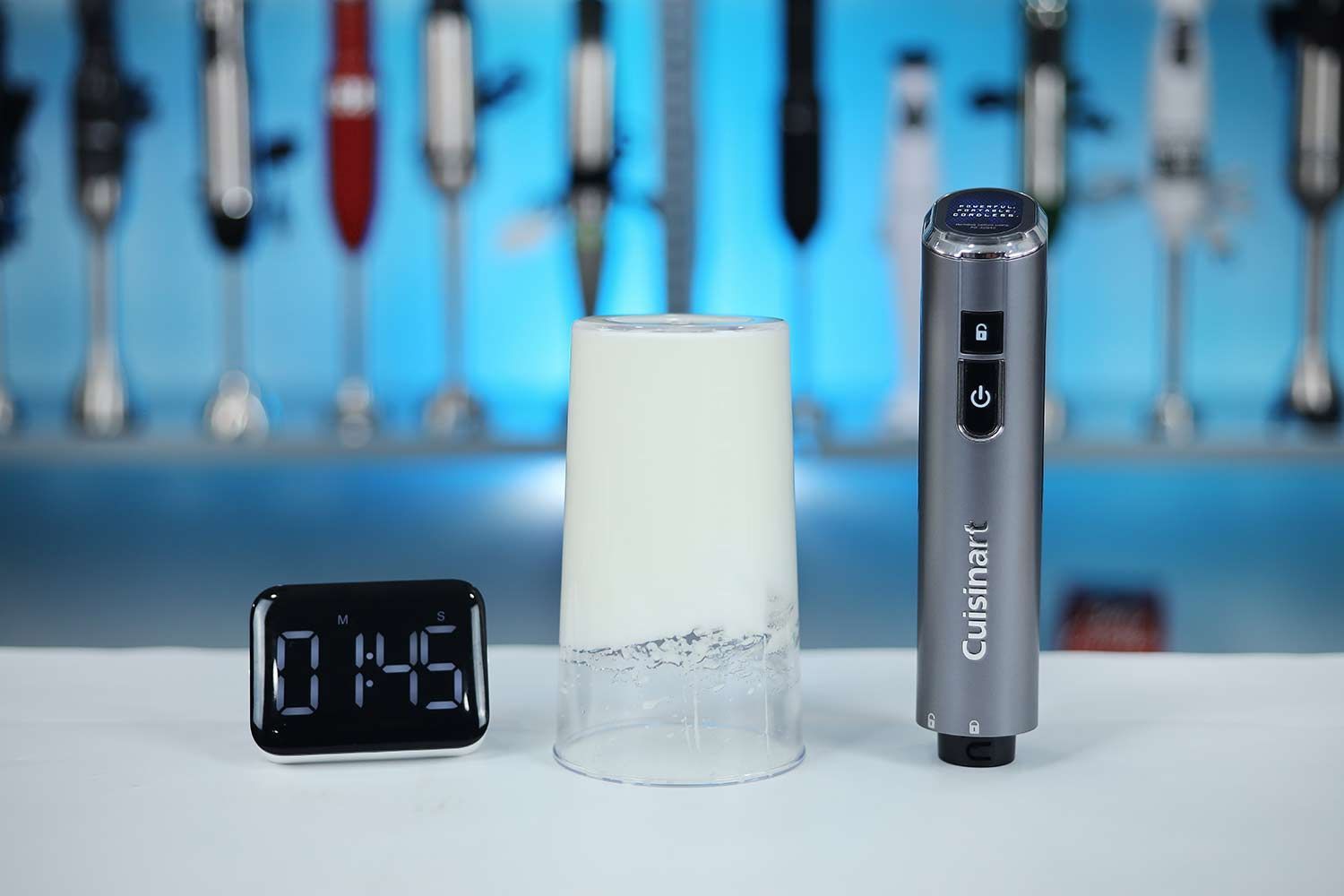
- ≤ 2 mins: Our research indicated that 2-minute is an appropriate amount of time for an immersion blender to complete this task. If any machine could ensure that completion time, we awarded it 10 points.
- 2 mins 1 sec ≤ 2 mins 15 secs: 9 points
- 2 mins 16 secs ≤ 2 mins 30 secs: 8 points
- 2 mins 31 secs ≤ 2 mins 45 secs: 7 points
- 2 mins 46 secs ≤ 3 mins: 6 points
- 3 mins 1 sec ≤ 3 mins 15 secs: 5 points
- 3 mins 16 secs ≤ 3 mins 30 secs: 4 points
- 3 mins 31 secs ≤ 3 mins 45 secs: 3 points
- 3 mins 45 secs ≤ 4 mins: 2 points
- 4 mins 1 sec ≤ 4 mins 15 secs: 1 point
- > 4 mins 15 secs: 0 points

